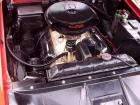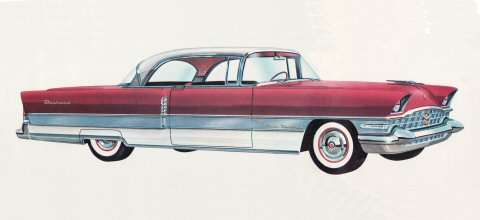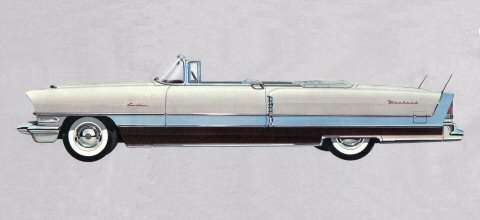|
Re: 9.2:1 CR in 327?
|
||||
|---|---|---|---|---|
|
Home away from home
|
Well, if this is true then why do the conventional points and condenser 12-volt ignition systems step down the voltage to the coil to be like is what is available in a 6-volt system? I understand the high output electronic ignition systems are different.
(o[]o) Addendum: There is a benefit for a hotter spark in a 12-volt system. In a 12-volt system, when starting, the voltage will drop, but there will still be much more available to fire the plugs than in a 6-volt system during starting. A voltage drop down to 4-volts is common when a 6-volt system is cranking. This reduced voltage will not leave much to fire the plugs. A 12-volt system will also have a voltage drop, but still leave plenty of voltage left to fire the plugs. This, plus the faster turning starters on 12-volt vehicles is what was needed to start the new high compression OHV V-8 engines.
Posted on: 2012/9/16 12:49
|
|||
|
We move toward
And make happen What occupies our mind... (W. Scherer) |
||||
|
||||
|
Re: 9.2:1 CR in 327?
|
||||
|---|---|---|---|---|
|
Home away from home

|
I would have to look into all that but I would think it may have something to do with materials available during he points and condenser days as way of he sparking system goes there is not too much different between a 6v points and a 12v points system usually smaller gauge wires are used in 12v and 12v has a dedicated coil I believe but in electronic Ignitions it is not recommended to use say solid core plug wires. That is pure speculation though. Keep in mind Ford didn't switch to 12v till 1957 so the Y block was being produced and it did have "high" compression for the day and i could be wrong but the first hemi engines in 1953 were 6v as well. so I personally feel that 6v could crank over a high compression engine in the 1950's sense of the word. Really high compression engines didnt come into play from the factory till the early 60s 427 Ford 413 Dodge 409 and 396 Chevy ect.
Posted on: 2012/9/16 22:11
|
|||
|
||||
|
Re: 9.2:1 CR in 327?
|
||||
|---|---|---|---|---|
|
Home away from home
|
I am enjoying this discussion, thanks for your comments.
Ford went to 12-volt systems with their 1956 models. High compression is a relative term here. In those days the then new OHV V-8 engines with 8.5:1 ratios were considered to be high compression as compared to the ones they replaced. You are right, that a 6-volt system would work well on these engines, but engineers were looking ahead to higher and higher ratios and more and more electrical accessories, including air conditioning. It was primarily for these reasons that manufactures went to 12-volts. You may recall that Chrysler was able to get an enhanced spark from their V-8's 6-volt ignition systems by using a dual point distributor. The dual point design allowed for an increased dwell period, thus allowing more time for the coil to build charge. Normally an 8-cylinder engine has a dwell spec of 28-30 degrees. The Chrysler design resulted in a 35 degree dwell period or a over a 15% increase in coil charge time. These were single coil, single rotor designs, unlike the dual coil-dual point-dual rotor designs. Dual point distributor plates were offered as an after market item for other makes too at that time. A neat way to increase ignition efficiency with the old points and condenser design. (o[]o)
Posted on: 2012/9/17 11:35
|
|||
|
We move toward
And make happen What occupies our mind... (W. Scherer) |
||||
|
||||
|
Re: 9.2:1 CR in 327?
|
||||
|---|---|---|---|---|
|
Home away from home

|
Thanks for the correction on the 12v change over for Ford I had a 55 which was 6v but that's the only 50s era Ford I had first hand experience with.
You are very right on the "high" compression ratios of the time from the factory and full race engines usually had somewhere around 11to1 or close to it and supercharged engines had much lower compared to a modern drag car where it is not uncommon to get into 13-14 to 1 ratios. With some early performance engines with high for the time compression ratios with domed pistons working with 6v ignitions it was pretty common to see the flame "go out" before you reached a complete even burn. With dual point systems you have two types 4 lobe and 8 lobe i don't know which Chrysler used but with 8 pints you do get a pretty decent increase in dwell where as with the 4 lobe design helps with high RPM as only one set of points is used at a time. Even now with the high output electronic ignitions some people still prefer to use points. And yes 12v really helps with electric accessories modern drag cars usually have 2 12v (or larger) batteries and they will often be close to dead after just one 1/4 mile run
Posted on: 2012/9/18 0:21
|
|||
|
||||
|
Re: 9.2:1 CR in 327?
|
||||
|---|---|---|---|---|
|
Home away from home
|
Not up to speed (pardon the pun) on the high compression, high performance, hopped-up engines back in the day. My discussion was centered on production OHV V-8s up to about 1955-56. The 6-volt ignition systems worked on these engines, but they could have starting problems; hence, the introduction of 12-volt systems after this time. Chrysler used an 8-lobe dual points distributor. I don't know if they continued this practice on their V-8s after changing to 12-volts.
(o[]o)
Posted on: 2012/9/18 11:22
|
|||
|
We move toward
And make happen What occupies our mind... (W. Scherer) |
||||
|
||||
|
Re: 9.2:1 CR in 327?
|
||||
|---|---|---|---|---|
|
Home away from home

|
Well in reference to factory high compression engines my 292 Ford Y block was possibly pushing somewhere in the neighborhood of 8to1 with the rebuilding it likely had in its life and with the factory 6v ignition it didn't like to start to quickly so I see what your saying. I do know Chrysler used factory dual point distributors in the muscle car days but I don't know the style (4 or 8 lobe) A lot of the high performance engines of that time did use the 4 lobe system as they were high rpm engines, in fact i have a Mallory Studebaker 4 lobe dual point distributor from the late 50s but I don't know how early that design goes.
Posted on: 2012/9/20 5:13
|
|||
|
||||








